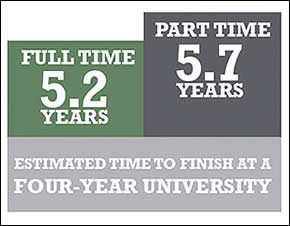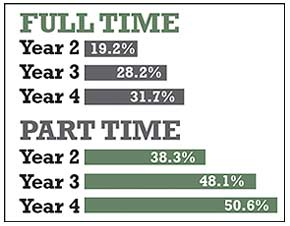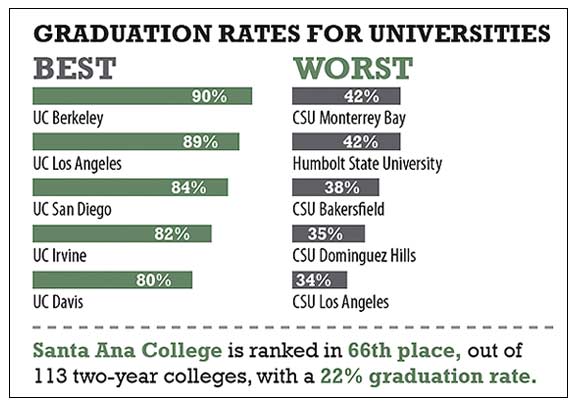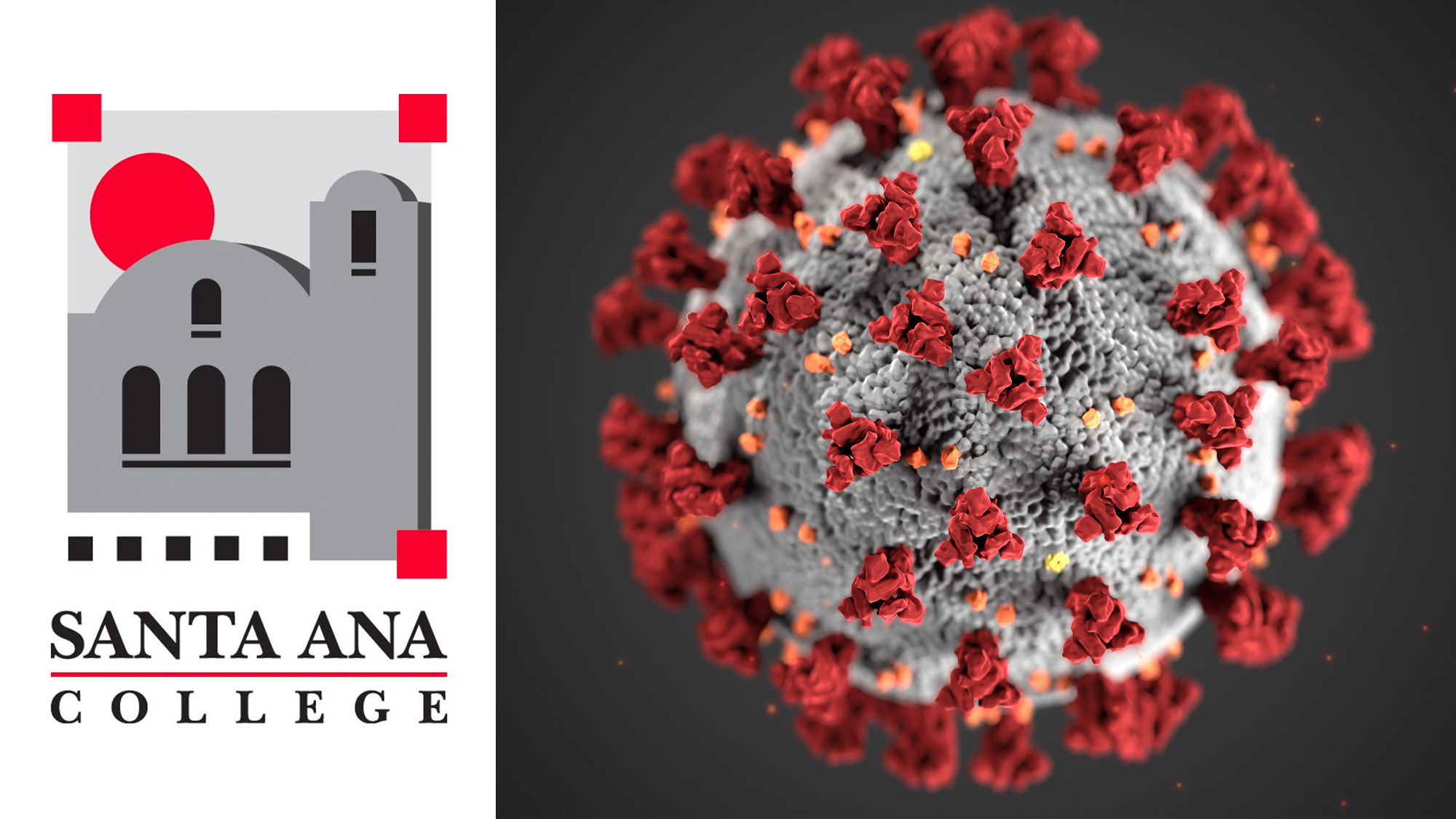College students today confront an unprecedented challenge in addition to balancing study, work, and maintaining a social life: while they are spending more time working on their degrees, fewer students are finishing, a new study finds.
“Time is the Enemy,” a Sept. 2011 study conducted by Complete College America found that, on average, just 60.6 percent of full-time students graduate with a bachelor’s degree within eight years, among other findings. The study is based on statistics provided by public colleges and universities in 33 states.
The results showed that Santa Ana College’s 22 percent graduation rate ranks 66 among 113 two-year schools in California, with graduation considered earning an associate’s degree or other certificate.
The “minimal standard” for statistics the federal government requires schools to release tracks “only students who are first-time and are going full-time.”
This means that students who transfer from community colleges to four-year institutions often are not accounted for once they transfer.
For Santa Ana College student Avery Lynch, the transfer process is grueling.
“The cost is definitely a factor. It’s really stressful and really frustrating,” he said. Lynch plans to transfer next fall, but like most students he is unsure of the process.
“Transferring is tough unless you can get a scholarship,” he added.
Apart from cost, one of the reason it takes students so long to graduate, is because many students waste time accumulating excess credits. Californians on average complete a four-year bachelor’s degree in 5.2 years if they attend full-time and 5.7 years if they attend part-time, taking an average of 139 credits when 120 are required.
The Student Transfer Achievement Reform Act guarantees admission to the California State university system for students who complete their lower division coursework at a two-year college. The program, which went into effect this fall, is designed to keep students on track to graduate.
STARA creates concerns for students who want to finish on time, especially when state budget cuts leaves schools in a bind. Though students want to complete required coursework, impacted majors and budget cuts often push graduation back.
Added time often leads to extra debt and a lessened drive to finish. The study found the longer students take, the more “students’ lives fill up with jobs and relationships…college often gets left behind.”
Other factors contribute to low graduation rates.
California’s students face the reality of juggling work and school in a state that continues to cut education funding. Shrinking budgets place institutions in the no-win situation of asking students and faculty to do more with increasingly limited resources.
As the study shows, students may be discouraged by the cost of higher education. Dwindling course catalogs, impacted majors, personal obligations and a bleak job market all contribute to lower transfer and graduation rates at two- and four-year colleges and universities.
TIME IS THE ENEMY – Source: Complete College America
- The two-party system is failing us. - October 19, 2024
- Read our Fall 2023 Print: Vol. 100 No. 1 - October 23, 2023
- Santa Ana College Awarded State Department of Finance Grant - April 2, 2015














